Parisian Walkways: Cour du Commerce Saint-André in Saint-Germain-des-Prés

This oasis of calm off the boulevard Saint-Germain hasn’t always been so refined and urbane. Jeffrey T Iverson discovers the dark past of a truly historic Parisian passageway…
Generally speaking, the old business maxim of “location, location, location” holds as true in Paris as it does elsewhere, and most of the time entrepreneurs will seek an address offering a practical mix of accessibility, visibility and foot traffic. But then again, there’s no city quite like Paris, and there are some streets in the French capital whose unique allure somehow trumps more conventional commercial considerations; streets whose history runs so deep the centuries seem to have instilled in them an atmosphere, a character, even a spirit of their own. So it is with the cour du Commerce-Saint-André, a narrow Left Bank passageway near the métro Odéon, nestled between the bustling boulevard Saint-Germain and rue Saint-André-des-Arts, which for almost 300 years has proved itself not only an improbable bastion of commerce for cafés and boutiques, but a walkway where some of the most important pages in the history of France have been written.
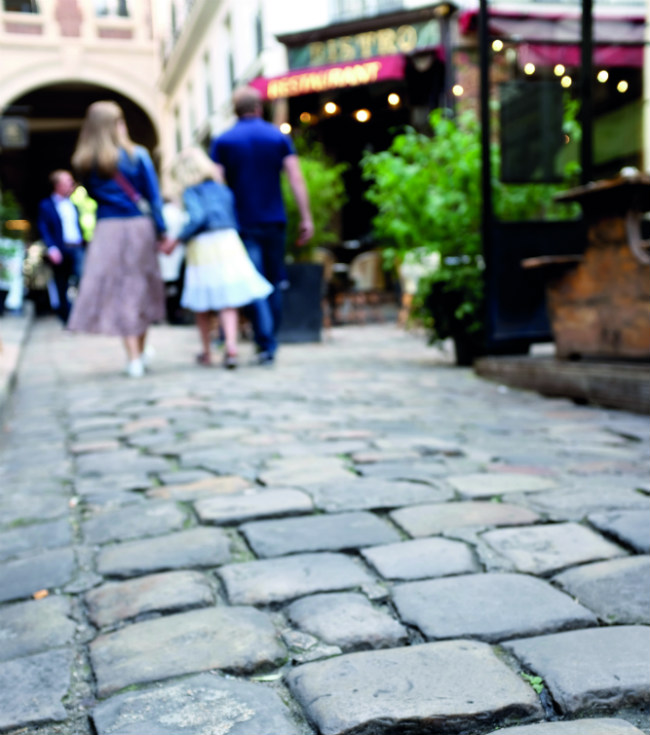
The cobblestones of the cour du Commerce-Saint-André. Photo: Jeffrey T Iverson
Marie-Laure Naudet, founder of the remarkable stationery shop Grim’Art, still remembers the day she first set foot in the cour du Commerce-Saint-André 16 years ago. “I’d walked all over Paris looking for a boutique to rent,” she recalls. Exhausted, she turned off boulevard Saint-Germain and wandered into a narrow passageway paved with time-worn, uneven cobblestones. Walking past charming shops and intimate cafe terraces with couples dining tête-à-tête, she made her way under the historic glass canopy covering the north end of the passageway. There, she was suddenly met with the inviting aromas of La Jacobine, a passageway restaurant renowned for its authentic French comfort food – slow-cooked dishes like boeuf bourguignon and coq au vin, and made-from-scratch desserts like tarte Tatin and tarte au citron. In a happy daze, she stepped inside.
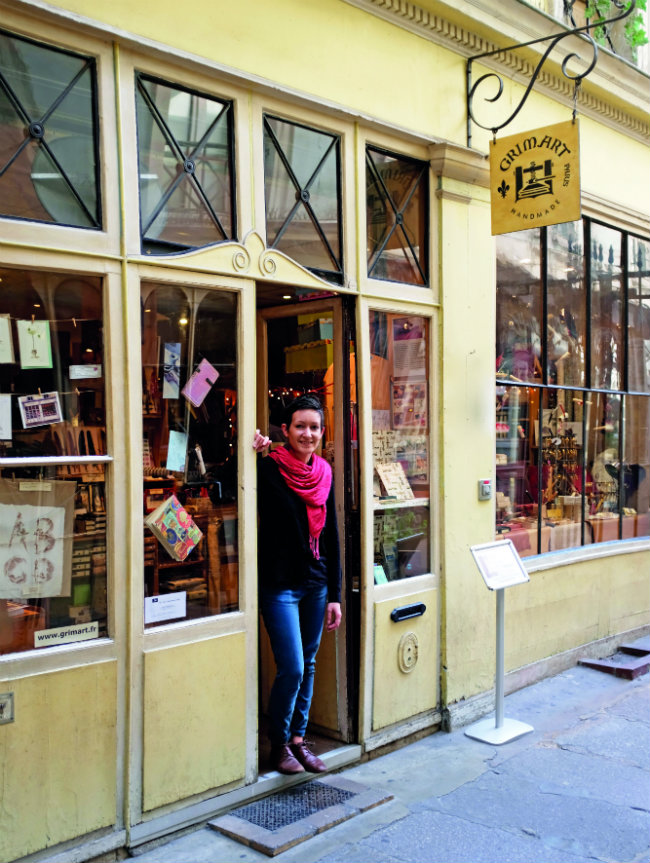
The stationery shop Grim’Art. Photo: Jeffrey T Iverson
The look of wonder – and hunger – on Marie-Laure’s face that day is one Jérémy Archambaud, owner and 22-year veteran of La Jacobine, has seen on visitors’ faces countless times. “I think this passageway carries you to another era,” he says. “We step off the busy boulevard Saint-Germain and all the sounds of the street melt away behind us. You immediately have the impression that you’ve stumbled upon a little alleyway where time has stopped. And here, under the glass roof, it’s like a little oasis.”
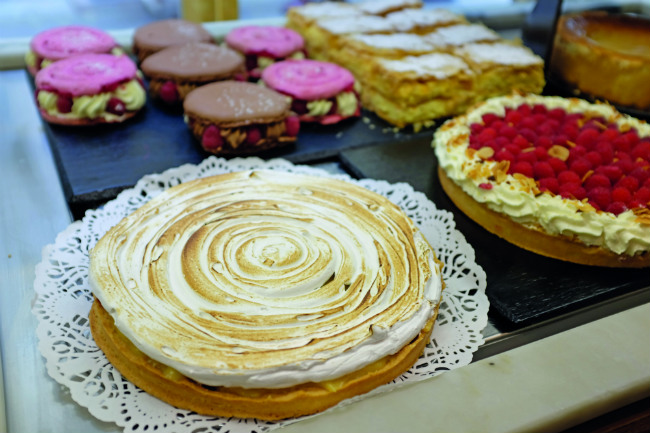
Homemade desserts at La Jacobine. Photo: Jeffrey T Iverson
Revivified by her meal, Marie-Laure gazed across the passageway from La Jacobine and noticed an empty boutique. “Newspaper was covering the windows, and I said to myself, ‘Wouldn’t that be the perfect spot!’” As it turned out, the boutique had just gone up for rent. “My family told me it was a bad idea, that the passageway was too dark, that customers would never be able to find me, that everything had to be renovated. Before me, a bookbinder worked here, so there was half a century of dried glue on the floor, and the walls were black. But I loved it at first sight.”
That sentiment is one that Sandrine, manager of the passageway’s Provençal épicerie fine Maison Bremond 1830, can appreciate. She admits that her authentic calissons d’Aix sweets, delectable French olive oils, tapenades and exquisite truffle preparations would probably sell even better just around the corner on the busy boulevard. “To open up here I think you have to have a coup de coeur for the place, for its beauty and history… Because, in commercial terms, these cobblestones are more of a handicap. People have to watch where they step, so sometimes they’ll pass by with their heads down and never even notice us. Others can’t even find this passageway. Somehow, though, we manage to do just fine. We’re selling pleasure after all, so the people who do come here always love it.”
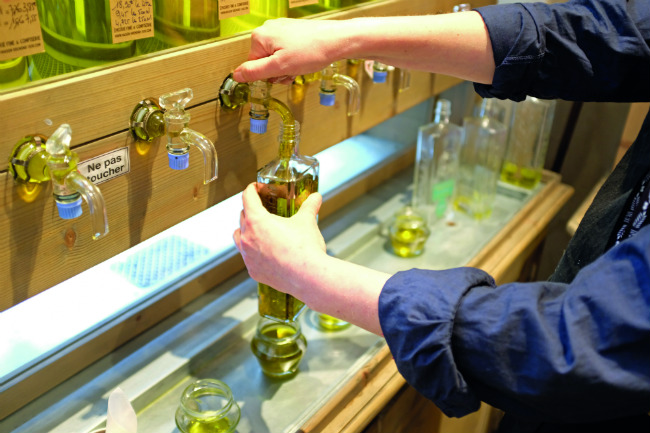
Pouring olive oil at Maison Bremond 1830. Photo: Jeffrey T Iverson
Today, Marie-Laure’s boutique Grim’Art is doing just fine as well, drawing a faithful clientele of in-the-know tourists, authors, artists and screenwriters. After the renovation she found that she had uncovered a boutique of ancient stone and wood (now partially protected as a historic monument), an ideal setting to sell her elegant calligraphy sets and quills and handcrafted, leather-bound journals. “It’s so historic,” she enthuses. “Like the ancient paving stones in the passageway, even the floor of my boutique is 300 years old – these floorboards were here during the Revolution! It creates such an atmosphere, and goes well with our old-fashioned grimoires.”
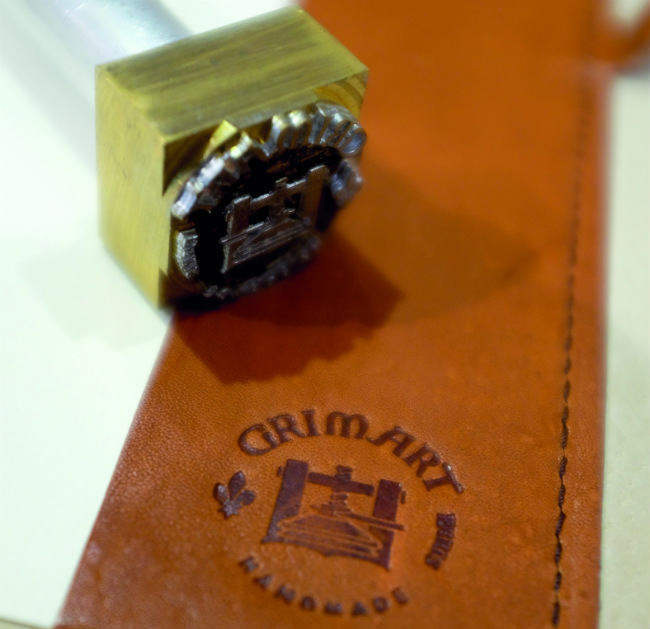
Handcrafted leather journal at Grim’Art. Photo: Jeffrey T Iverson
Apparently, Marie-Laure is not alone in founding a business here for reasons more heartfelt than rational. “It’s true this place has its drawbacks,” says Pierre Cluizel of Un Dimanche à Paris. “The passageway is hidden away. But I preferred to have an extraordinary address that was hidden away, rather than a well- situated address with no soul.” As the son of the famous chocolatier Michel Cluizel and grandson of a pastry chef, Pierre had long dreamed of creating a vast, multi-faceted establishment uniting his family’s passions for chocolate, pastries and cuisine. Almost eight years ago, he learned of an 800 square metre space available in a passageway in Saint-Germain-des-Prés. Upon visiting, he found not only a space large enough for the salon de thé, restaurant, boutique and culinary workshops he had dreamed of, but something more…
Rising though the middle of the building was a medieval tower, perfectly intact. The cobblestones of the cour du Commerce-Saint-André, it turns out, follow part of the perimeter of the fortified walls of Paris built from 1190 to 1215 by Philip Augustus. The L-shaped section of the current passageway linking rue de l’Ancienne-Comédie and rue Saint-André-des-Arts was created around 1735.
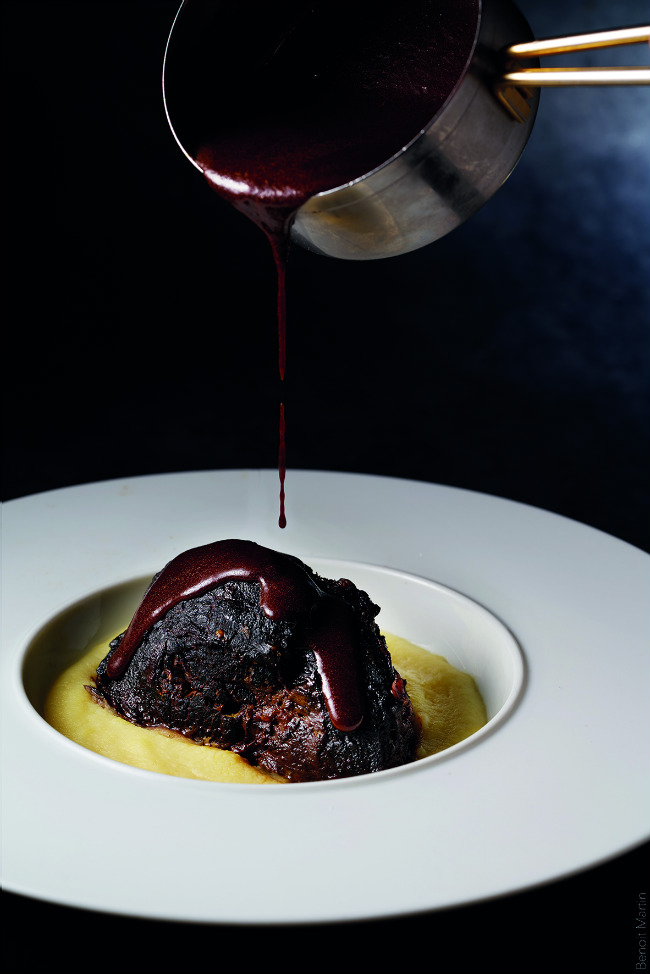
Cocoa-accented beef at Un Dimanche à Paris. Courtesy of Un Dimanche à Paris
CONTEMPORARY RESTAURANT
Cluizel would build his chic, contemporary restaurant and salon de thé right around the ancient tower and serve refined dishes with subtle, cacao-infused sauces, pastries and chocolat chaud from grand cru chocolate. Placing the old at the centre of the new came instinctively for Cluizel, a great history lover. In researching the passageway, he stumbled upon an anecdote from the era when coffee and drinking chocolate were first becoming à la mode in Paris. To taste these exotic specialities, noble ladies rode in their carriages to this very passageway, where vendors would serve them in their seats.
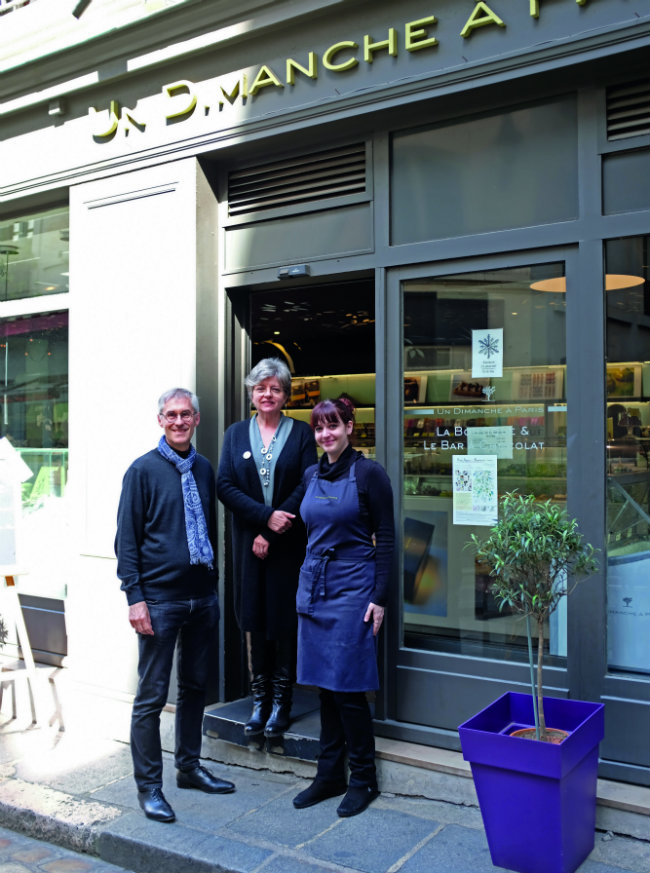
Un Dimanche à Paris. Photo: Jeffrey T Iverson
For Cluizel, whose business model centuries later is essentially enticing the elegant ladies of Paris to come and sip chocolat chaud in the passageway, it was a positively delicious discovery. “When I learned this, I was truly moved,” he says. “We always build the future upon the past – which is why it’s important for me to have this extraordinary passageway, this tower, this ancient stone floor, but at the same time, to be creating the recipes of today.”
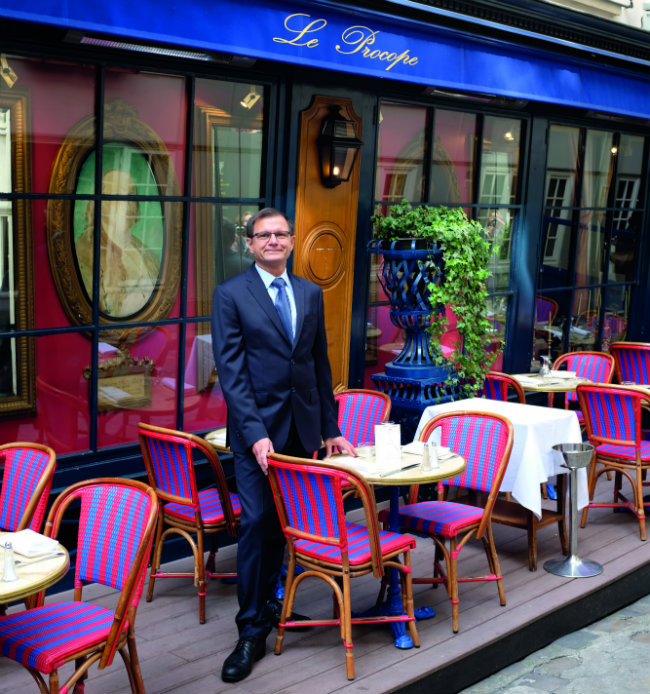
Le Procope, the famous café. Photo: Jeffrey T Iverson
Through the centuries, the chocolat chaud and coffee consumed in this passageway has literally fuelled some of the most earth-shaking events in French history. In 1686, an Italian immigrant named Francesco Procopio dei Coltelli created the world’s first café in the buildings today situated between 13 rue de l’Ancienne-Comédie and cour du Commerce-Saint-André. He called it Le Procope. “This place has welcomed all of French history through its doors, from 1686 to today,” explains Eric Giroud-Trouillet, the restaurant’s director. “At its creation, it was the only place of its kind in Paris – a beautiful, glitzy establishment where you could drink the first coffees, where journalists, writers and other thinkers came together to imagine the France of tomorrow.” As Voltaire put it, unlike the literary salons, which required an invitation from a grande dame, Le Procope was “the first salon where one’s spirit was the only invitation necessary”.
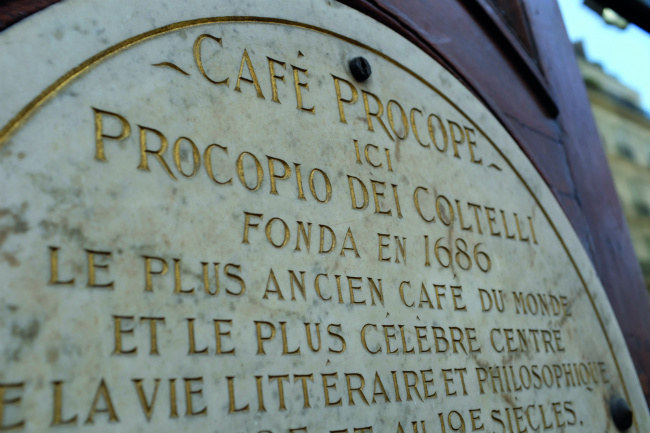
The plaque at Le Procope. Photo: Jeffrey T Iverson
The philosophes of the Enlightenment – Voltaire, Rousseau, Diderot and Montesquieu – gathered here in the 18th century, imagining a world with a limited monarchy, freedom of speech, and equality. Denis Diderot and the Encyclopédistes worked here, writing the first encyclopaedia in a desire “to change the way people think” and consolidate the world’s knowledge. Later in the 18th century, the men who would translate the ideas of the Enlightenment into Revolution gathered here. Benjamin Franklin worked on the American Constitution here. And for the leaders of the French Revolution – Georges Danton, Jean-Paul Marat, Maximilien Robespierre – Le Procope became their de facto headquarters. Danton lived at No.1 of the cour.
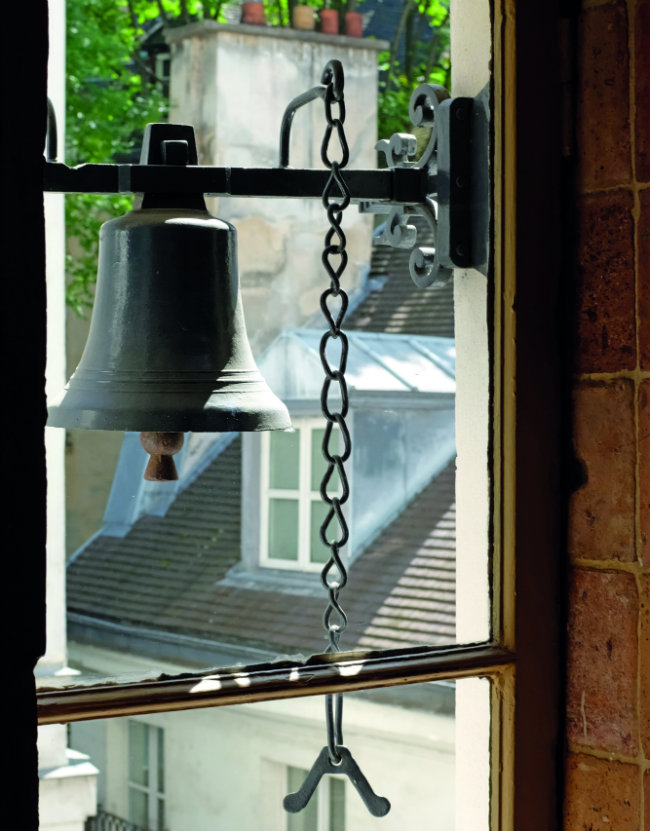
Marat’s bell at Le Procope. Photo: Jeffrey T Iverson
Marat printed his revolutionary newspaper L’Ami du peuple at No.8. Today that address is shared by the boutiques of Maison Bremond 1830 and Un Dimanche à Paris. “Marat wrote every day on the third floor of Le Procope in a room now called the Salon Marat,” enthuses Cluizel. “When he finished an article, he’d ring a bell, which still hangs in the window overlooking the passageway, to call his employees over to pick it up for printing.”
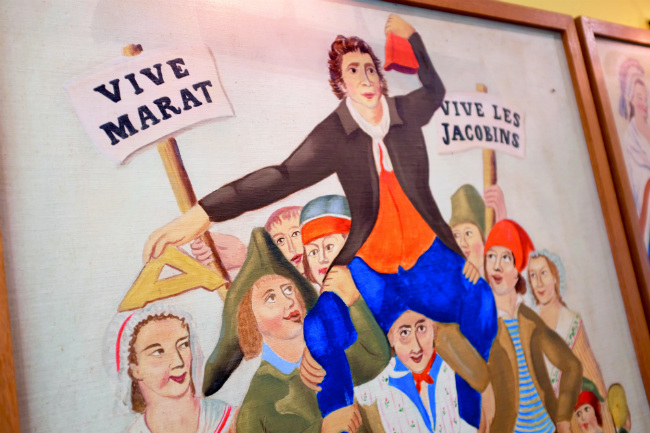
Décor image at La Jacobine depicting the Revolution. Photo: Jeffrey T Iverson
One of history’s macabre ironies is the fact that the Revolution eventually took the lives of many of its architects. Marat was famously stabbed to death in his bathtub by Charlotte Corday at 18 rue de l’École-de-Médecine (the gory scene is immortalised in wax, with Marat’s actual bathtub, at the Musée Guimet). As for Danton, he met the guillotine in 1794 on the place de la Révolution (today’s place de la Concorde). His final words were to the executioner: “Don’t forget to show my head to the people. It’s well worth seeing.”
How ironic if the instrument of Danton’s demise had been conceived in the very street where he lived? Actually, it was. “Tobias Schmidt, the creator of the guillotine, lived at No.9, the building just across the street from us,” says Guillaume Cassagnes, the third-generation owner of Le Relais Odéon, a brasserie on the boulevard Saint-Germain whose rear terrace spills out over the cour du Commerce-Saint-André. “He was primarily an instrument maker, but he created the guillotine on behalf of the physician and politician Dr Guillotin, who also lived nearby. The first tests on the guillotine took place right here – on sheep.” Cassagnes still marvels at the thought. “This historic dimension of this street is so rich,” he says. “Le Procope is a historic monument, the tower at Un Dimanche à Paris is a simply amazing sight, and even these ancient cobblestones on the ground are a great rarity in the Latin Quarter, since most of the cobblestones were removed to make barricades during May 1968.”
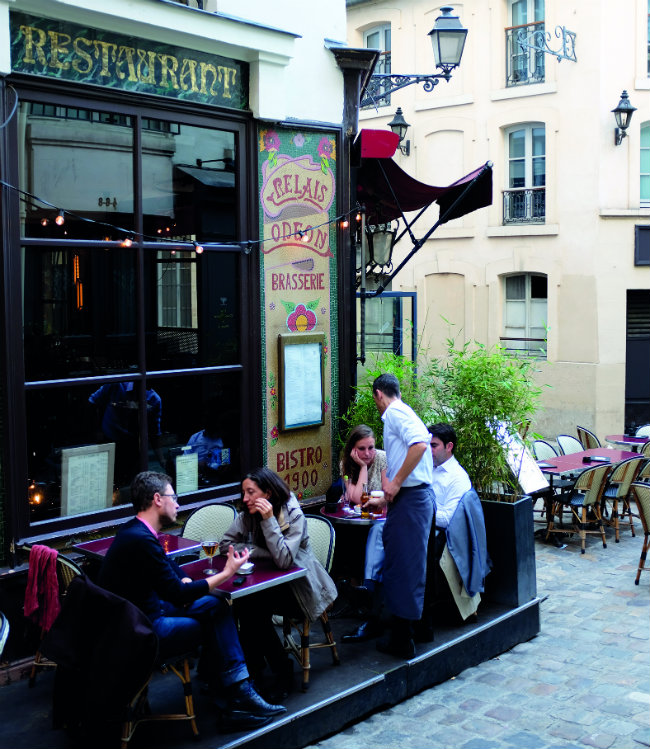
Le Relais Odéon. Photo: Jeffrey T Iverson
Interestingly, Le Relais Odéon didn’t always have terraces overlooking the passageway. It was in the 1970s that the Cassagnes family acquired the rear part of their building, which until then was a bouillon, the name for the working-class restaurants which flourished in Belle-Époque Paris. Even though it’s all technically one brasserie now, says Cassagnes, somehow it’s like they’ve remained two different establishments. “Today, we basically have two clienteles, one that seeks the calm of the cour du Commerce-Saint-André, and one which prefers to be in the front, overlooking the boulevard Saint-Germain.”
Location, location, location, indeed.
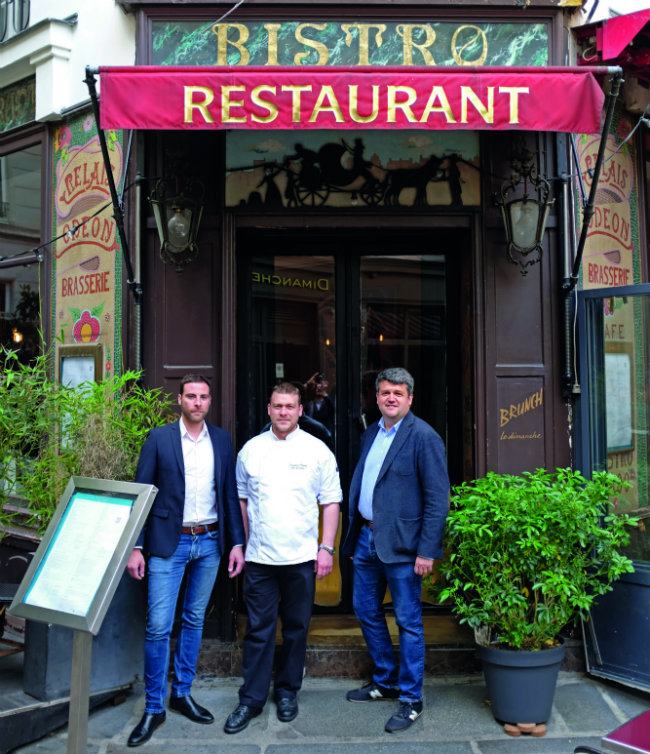
Le Relais Odéon. Photo: Jeffrey T Iverson
BOUTIQUES AND RESTAURANTS
LE RELAIS ODÉON, 132 boulevard Saint-Germain, Tel. +33 (0)1 43 29 81 80
Le Relais Odéon is a true Parisian brasserie, founded by an Aveyronnais family three generations ago and offering refreshments and atmosphere to please one and all. The bustling boulevard-side terrace draws cocktail sippers and people watchers, the chic back rooms are ideal for tête-à-tête dining, and the rear terrace in the historic passageway is a postcard of vieux Paris.
MAISON BREMOND 1830, 8 cour du Commerce-Saint-André, Tel. +33 (0)1 43 26 79 72
In recent years, a handful of boutiques across Paris emblazoned with the words Maison Bremond have emerged as genuine ambassadors of Provençal terroir. Outlets of a family-run épicerie fine founded in 1830 in Aix-en-Provence, today one of the most beautiful is this historic boutique on cour du Commerce-Saint-André, now a Mecca for lovers of olive oil, truffles, and calissons.
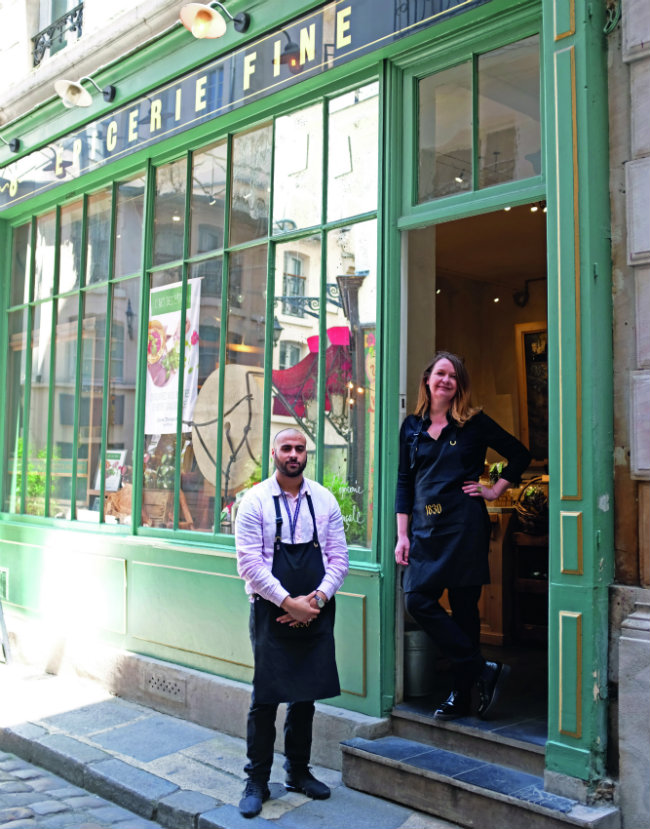
Maison Bremond 1830. Photo: Jeffrey T Iverson
UN DIMANCHE À PARIS, 4-6-8 cour du Commerce-Saint-André, Tel. +33 (0)1 56 81 18 08
A gourmet address like no other, Un Dimanche à Paris reunites the passions for cuisine, pâtisserie and chocolate of Pierre Cluizel, son of a celebrated chocolatier who travelled the globe for years visiting cacao plantations. At his elegant hybrid establishment, gastronomes can dine on cacao-infused dishes, indulge in exquisite pastries and chocolates, or attend culinary workshops.
LE PROCOPE, 13 rue de l’Ancienne-Comédie, Tel. +33 (0)1 40 46 79 00
Founded in 1686, perhaps no restaurant in France has witnessed so many centuries of history, or hosted so many illustrious figures – Voltaire, Robespierre, Napoleon – as Le Procope. Historic objects, paintings and letters decorate the walls, but this restaurant museum is also a vibrant torchbearer of French cuisine bourgeoise, from coq au vin to blanquette de veau.
LA JACOBINE, 59-61, rue Saint-André-des-Arts, Tel. +33 (0)1 46 34 15 95
Tucked away at the quiet end of a covered passageway, this small salon de thé and restaurant is a true hidden jewel. Over the last two decades, La Jacobine has built a sterling reputation as a bastion of traditional, slow-cooked French fare that harks back to earlier, more innocent times. Their chocolat chaud Aztèque alone makes it worth stepping off the boulevard Saint-Germain.
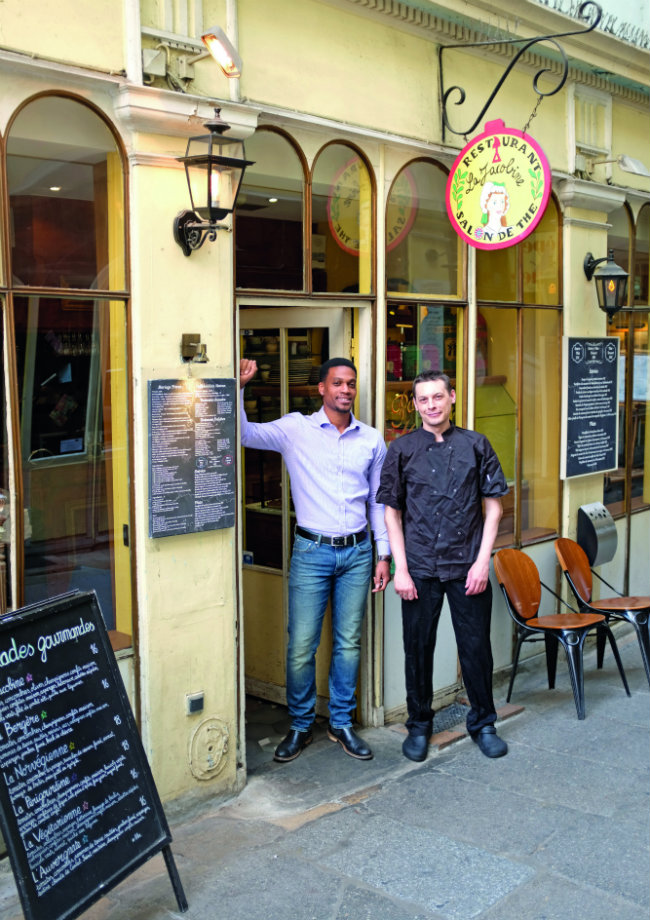
La Jacobine. Photo: Jeffrey T Iverson
GRIM’ART, 59-61 rue Saint-André-des-Arts, Tel. +33 (0)1 46 33 19 88
Grim’Art is a play on ‘grimoire’ – and, in fact, visualising an ancient leather tome of magical spells will give you an idea of the rare craftsmanship behind this boutique’s handmade, leather-bound stationery, journals and albums. They’re beloved by writers, artists, designers and film directors, who return regularly for fresh paper, calligraphy pens, ink and stamps.
From France Today magazine
Share to: Facebook Twitter LinkedIn Email
Leave a reply
Your email address will not be published. Required fields are marked *




REPLY
REPLY
REPLY